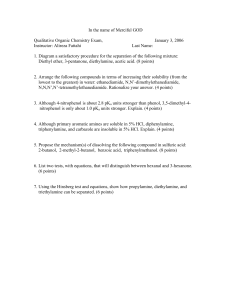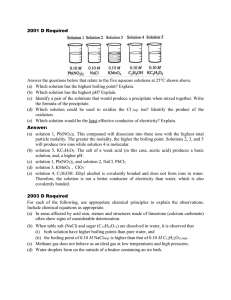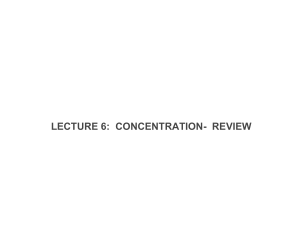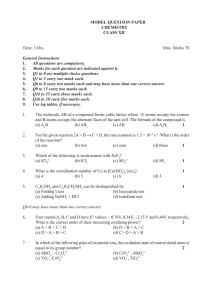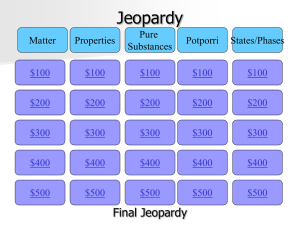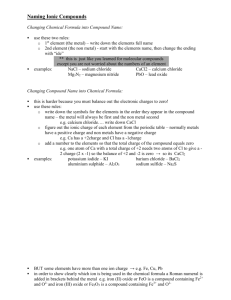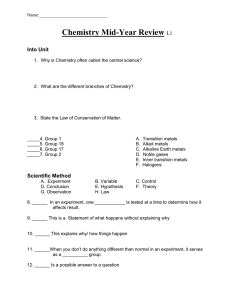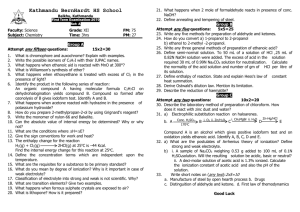Chemistry Solutions Problem Set: Boiling Point, Freezing Point
advertisement
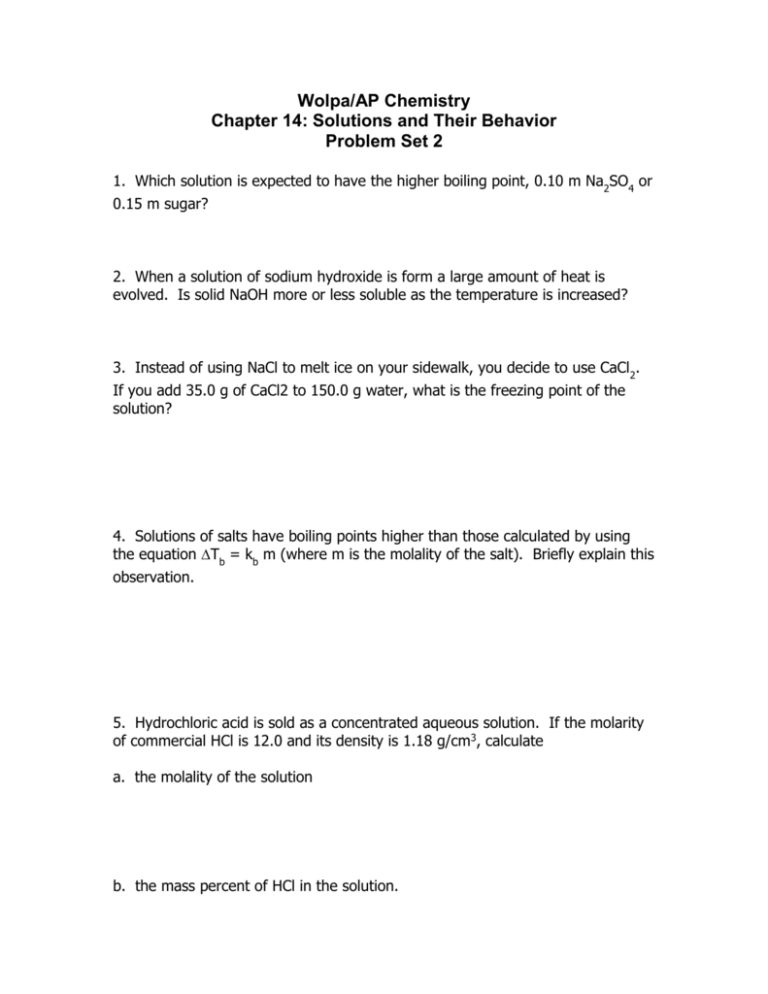
Wolpa/AP Chemistry Chapter 14: Solutions and Their Behavior Problem Set 2 1. Which solution is expected to have the higher boiling point, 0.10 m Na2SO4 or 0.15 m sugar? 2. When a solution of sodium hydroxide is form a large amount of heat is evolved. Is solid NaOH more or less soluble as the temperature is increased? 3. Instead of using NaCl to melt ice on your sidewalk, you decide to use CaCl2. If you add 35.0 g of CaCl2 to 150.0 g water, what is the freezing point of the solution? 4. Solutions of salts have boiling points higher than those calculated by using the equation Tb = kb m (where m is the molality of the salt). Briefly explain this observation. 5. Hydrochloric acid is sold as a concentrated aqueous solution. If the molarity of commercial HCl is 12.0 and its density is 1.18 g/cm3, calculate a. the molality of the solution b. the mass percent of HCl in the solution. 6. A protozoan (single-celled animal) that normally lives in the ocean is placed in the fresh water. Will it shrivel or burst? Explain briefly. 8. In chemical research we often send newly synthesized compounds to commercial laboratories for analysis. These laboratories determine the mass percent of C and H by burning the compound and collecting the evolved CO2 and H2O. They determine the molar mass by measuring the osmotic pressure of a solution of the compound. Calculate the empirical and molecular formulas of a compound CxHyCr, given the following information: a. The compound contains 73.94% C and 8.27% H; the remainder is chromium. b. At 25 oC, the osmotic pressure of a solution containing 5.00 mg of the unknown dissolved in 100.0 mL of chloroform is 3.17 mm Hg.

